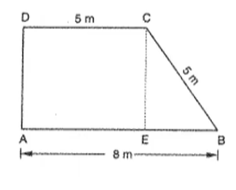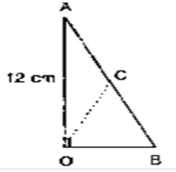In ABC,∠A=1000 ,AD bisects ∠A and AD⊥BC.f∈d ∠B.
Step by step video & image solution for In A B C ,/_A=100^0 ,A D\ b i s e c t s\ /_A\ a n d\ A D_|_B Cdotfin d\ /_Bdot by Maths experts to help you in doubts & scoring excellent marks in Class 7 exams.
Topper's Solved these Questions
Similar Questions
In ABC, if ∠A=1000, AD bisects ∠A and ∠AD ⊥BC . Then, ∠B= 500 (b) 900 (c) 400 (d) 1000
View SolutionIn ABC,∠A=1000 ,AD bisects ∠A and AD⊥BC.f∈d ∠B.
View SolutionIn ABC, ∠B=600,∠C=400, AL⊥BC and AD bisects ∠A such that L and D lie on side BC. Find ∠LAD.
View SolutionIn Fig.81, side BC of ABC has been produced to D and CEBA. If ∠ABC=650, ∠BAC=550, find ∠ACE, ∠ECD and ∠ACD.
View SolutionIn Fig. 71, if ABCD and CDEF, find ∠ACE
View SolutionABCD is a cyclic quadrilateral in which: BCAD, ∠ADC=1100 and ∠BAC=500. Find ∠DAC ∠DBC=800 and ∠BAC=400. Find ∠BCD ∠BCD=1000and ∠ABD=700 find ∠ADB
View SolutionIn a parallelogram ABCD, the diagonals bisect each other at O. If ∠ABC=300, ∠BDC=100and ∠CAB=700, Find: ∠DAB, ∠ADC, ∠BCD, ∠AOD, ∠DOC, ∠BOC, ∠AOB, ∠ACD, ∠CAB, ∠ADB
Given that
∠ABC=302,∠ABC=∠ADC=300
[We know that measure of opposite angles are equal in a parallelogram]
∠BDC=100
∠CAB=700
∠BDA=∠ADB=∠ADC–∠BDC
302–102=202
∠DAB=1800–300=1500
∠ADB=∠DBC=200 (alternate angles)
∠BCD=∠DAB=1500
[we know, opposite angles are equal in a parallelogram]
∠DBA=∠BDC=100
[we know, Alternate interior angles are equal]
InΔABC
∠CAB+∠ABC+∠BCA=1800
[since, sum of all angles of a triangle is 180^0]
700+300+∠BCA=1800
∠BCA=1800–1000=800
∠DAB=∠DAC+∠CAB=700+800=1500
∠BCD=1500 (opposite angle of the parallelogram)
∠DCA=∠CAB=700
In ΔDOC∠BDC+∠ACD+∠DOC=1800
[since, sum of all angles of a triangle is 180^0]
100+700+∠DOC=1800
∠DOC=1800−800
∠ACB=800View SolutionIn quadrilateral ABCD show in Figure. ABDC and AD⊥AB. Also, AB=8m, DC=BC=5m. Find the area of the quadrilateral.
 View Solution
View SolutionIn a quadrilateral ABCD, ∠A+∠C is 2 times ∠B+∠D. If ∠A=140∘ and ∠D=60∘, then ∠B= 60∘ (b) 80∘ (c) 120∘ (d) None of these
View SolutionIn Figure, ∠AOB=900, AC=BC, OA=12 cm and OC=6.5cm. Find the area of AOB.
 View Solution
View Solution

